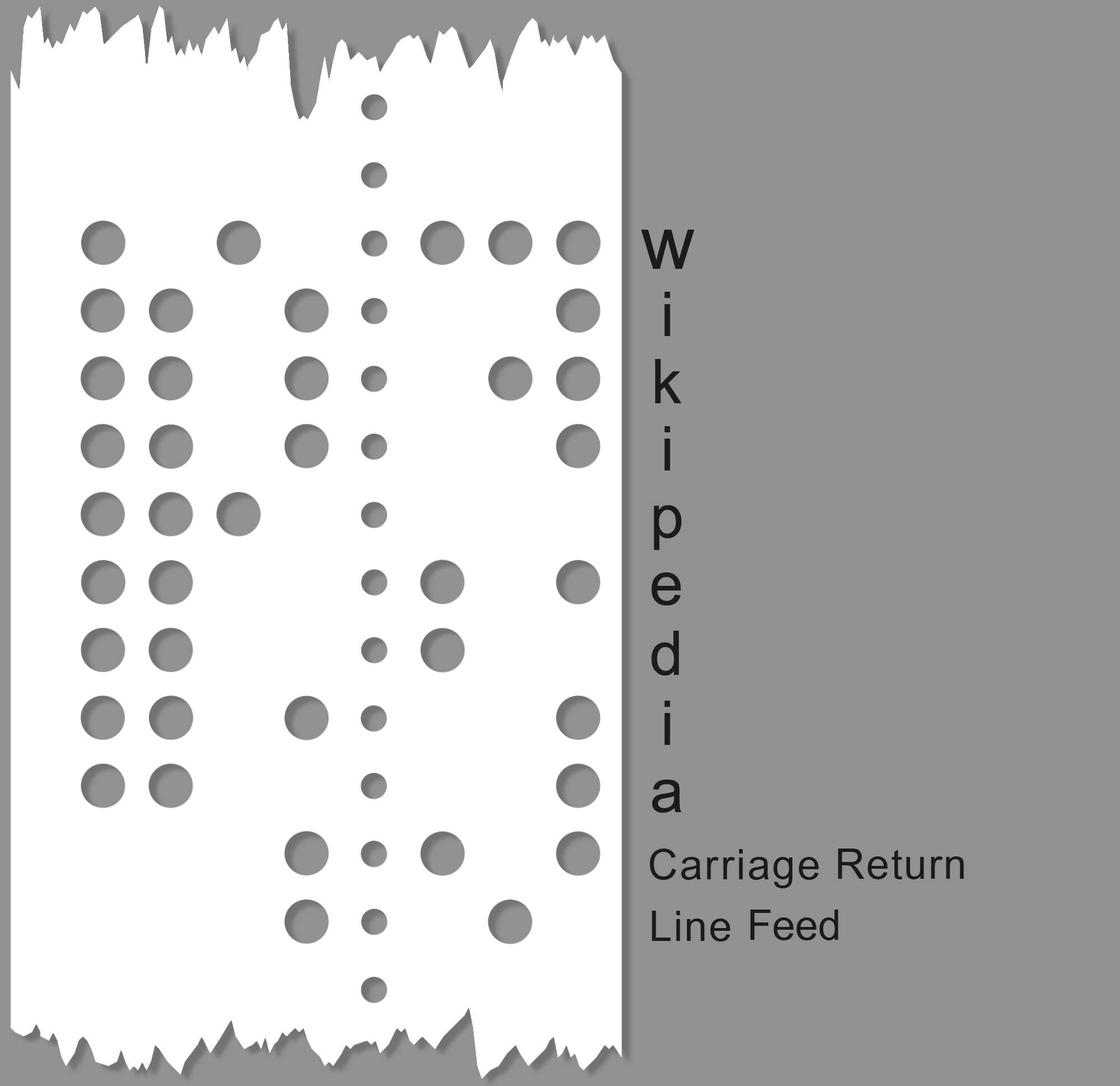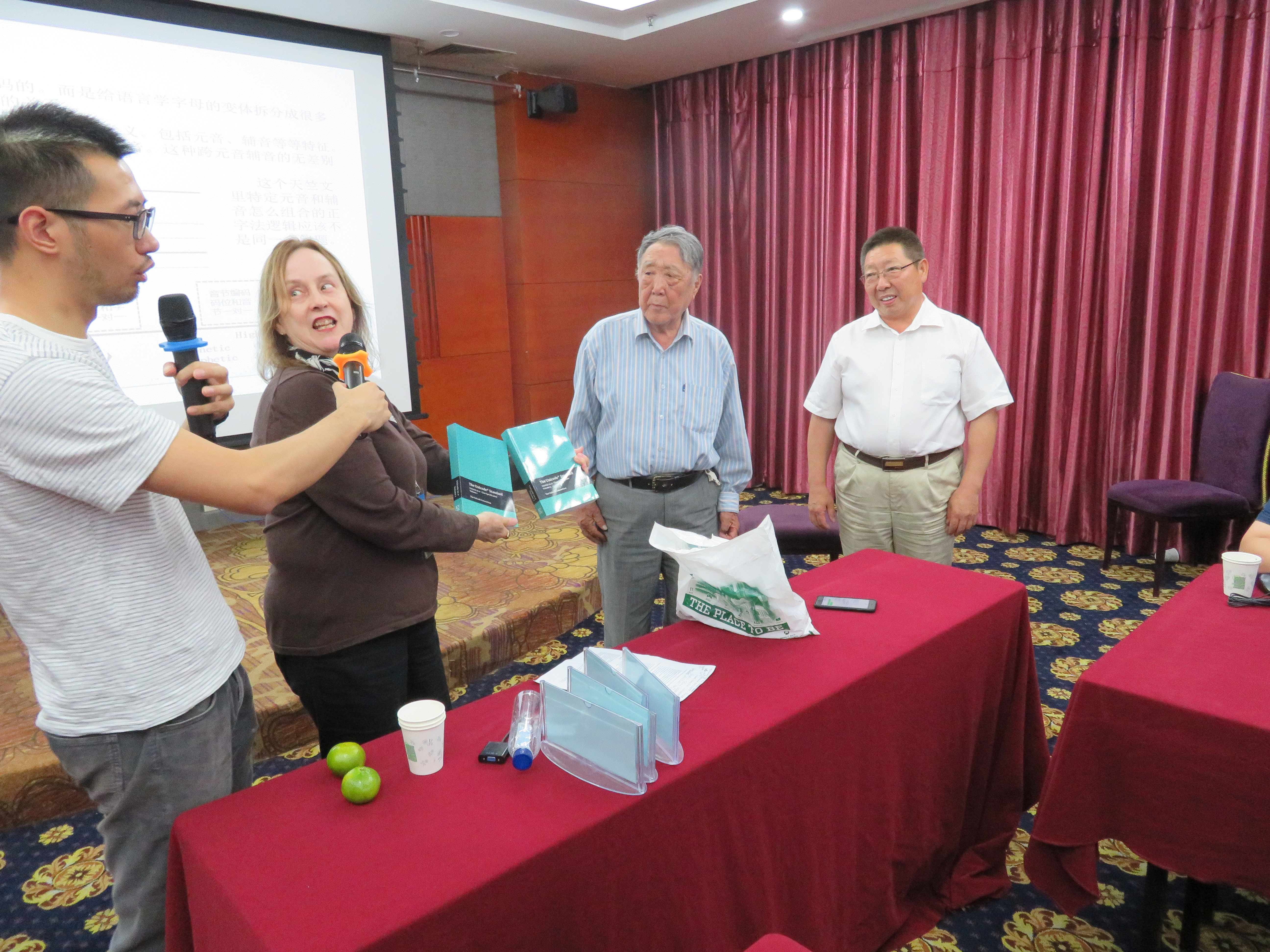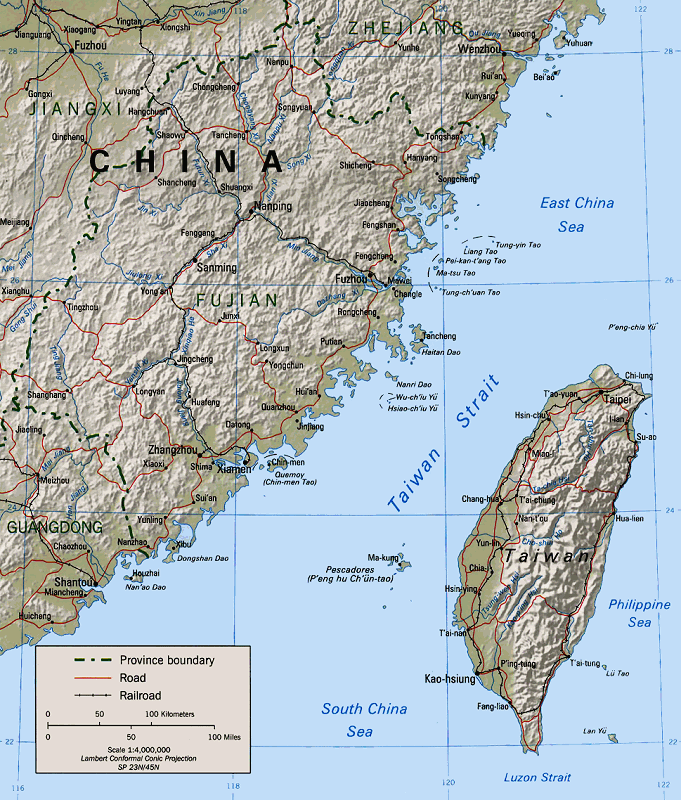|
Chinese Telegraph Code
The Chinese telegraph code, or Chinese commercial code, is a four-digit character encoding enabling the use of Chinese characters in electrical telegraph messages. Encoding and decoding A codebook is provided for encoding and decoding the Chinese telegraph code. It shows one-to-one correspondence between Chinese characters and four-digit numbers from 0000 to 9999. Chinese characters are arranged and numbered in dictionary order according to their radicals and strokes. Each page of the book shows 100 pairs of a Chinese character and a number in a 10×10 table. The most significant two digits of a code matches the page number, the next digit matches the row number, and the least significant digit matches the column number, with 1 being the column on the far right. For example, the code 0022 for the character (zhōng), meaning “center,” is given in page 00, row 2, column 2 of the codebook, and the code 2429 for the character (wén), meaning “script,” is given in page 24, ... [...More Info...] [...Related Items...] OR: [Wikipedia] [Google] [Baidu] |
Character Encoding
Character encoding is the process of assigning numbers to graphical character (computing), characters, especially the written characters of human language, allowing them to be stored, transmitted, and transformed using computers. The numerical values that make up a character encoding are known as code points and collectively comprise a code space or a code page. Early character encodings that originated with optical or electrical telegraphy and in early computers could only represent a subset of the characters used in written languages, sometimes restricted to Letter case, upper case letters, Numeral system, numerals and some punctuation only. Over time, character encodings capable of representing more characters were created, such as ASCII, the ISO/IEC 8859 encodings, various computer vendor encodings, and Unicode encodings such as UTF-8 and UTF-16. The Popularity of text encodings, most popular character encoding on the World Wide Web is UTF-8, which is used in 98.2% of surve ... [...More Info...] [...Related Items...] OR: [Wikipedia] [Google] [Baidu] |
Simplified Characters
Simplified Chinese characters are one of two standardized character sets widely used to write the Chinese language, with the other being traditional characters. Their mass standardization during the 20th century was part of an initiative by the People's Republic of China (PRC) to promote literacy, and their use in ordinary circumstances on the mainland has been encouraged by the Chinese government since the 1950s. They are the official forms used in mainland China, Malaysia, and Singapore, while traditional characters are officially used in Hong Kong, Macau, and Taiwan. Simplification of a component—either a character or a sub-component called a radical—usually involves either a reduction in its total number of strokes, or an apparent streamlining of which strokes are chosen in what places—for example, the radical used in the traditional character is simplified to to form the simplified character . By systematically simplifying radicals, large swaths of the characte ... [...More Info...] [...Related Items...] OR: [Wikipedia] [Google] [Baidu] |
Unicode
Unicode or ''The Unicode Standard'' or TUS is a character encoding standard maintained by the Unicode Consortium designed to support the use of text in all of the world's writing systems that can be digitized. Version 16.0 defines 154,998 Character (computing), characters and 168 script (Unicode), scripts used in various ordinary, literary, academic, and technical contexts. Unicode has largely supplanted the previous environment of a myriad of incompatible character sets used within different locales and on different computer architectures. The entire repertoire of these sets, plus many additional characters, were merged into the single Unicode set. Unicode is used to encode the vast majority of text on the Internet, including most web pages, and relevant Unicode support has become a common consideration in contemporary software development. Unicode is ultimately capable of encoding more than 1.1 million characters. The Unicode character repertoire is synchronized with Univers ... [...More Info...] [...Related Items...] OR: [Wikipedia] [Google] [Baidu] |
Unicode Consortium
The Unicode Consortium (legally Unicode, Inc.) is a 501(c)(3) non-profit organization incorporated and based in Mountain View, California, U.S. Its primary purpose is to maintain and publish the Unicode Standard which was developed with the intention of replacing existing character encoding schemes that are limited in size and scope, and are incompatible with multilingual environments. Unicode's success at unifying character sets has led to its widespread adoption in the internationalization and localization of software. The standard has been implemented in many technologies, including XML, the Java programming language, Swift, and modern operating systems. Members are usually but not limited to computer software and hardware companies with an interest in text-processing standards, including Adobe, Apple, the Bangladesh Computer Council, Emojipedia, Facebook, Google, IBM, Microsoft, the Omani Ministry of Endowments and Religious Affairs, Monotype Imaging, Netflix, Sales ... [...More Info...] [...Related Items...] OR: [Wikipedia] [Google] [Baidu] |
Telegraph Code
A telegraph code is one of the character encodings used to transmit information by telegraphy. Morse code is the best-known such code. ''Telegraphy'' usually refers to the electrical telegraph, but telegraph systems using the optical telegraph were in use before that. A code consists of a number of code points, each corresponding to a letter of the alphabet, a numeral, or some other character. In codes intended for machines rather than humans, code points for control characters, such as carriage return, are required to control the operation of the mechanism. Each code point is made up of a number of elements arranged in a unique way for that character. There are usually two types of element (a binary code), but more element types were employed in some codes not intended for machines. For instance, American Morse code had about five elements, rather than the two (dot and dash) of International Morse Code. Codes meant for human interpretation were designed so that the characte ... [...More Info...] [...Related Items...] OR: [Wikipedia] [Google] [Baidu] |
Four-corner Method
The four-corner method or four-corner system () is a Chinese input methods for computers, character-input method used for Character encoding, encoding Chinese characters into either a computer or a manual typewriter, using four or five numerical digits per Character (computing), character. The four digits encode the shapes found in the four corners of the symbol, upper left to lower right. Although this does not uniquely identify a Chinese character, it leaves only a very short list of possibilities. A fifth digit can be added to describe an extra part above the lower right if necessary. The four-corner method, in its three revisions, was supported by the Chinese state for a while, and is found in numerous older reference works and some still in publication. The small ''Kangorin Sino-Japanese Dictionary'' by Yoneyama had a four-corner index when it was introduced in the 1980s, but it has since been deleted. However, it is not in common usage today, although dictionaries using ... [...More Info...] [...Related Items...] OR: [Wikipedia] [Google] [Baidu] |
Code Point
A code point, codepoint or code position is a particular position in a Table (database), table, where the position has been assigned a meaning. The table may be one dimensional (a column), two dimensional (like cells in a spreadsheet), three dimensional (sheets in a workbook), etc... in any number of dimensions. Technically, a code point is a unique position in a quantized n-dimensional space, where the position has been assigned a semantic meaning. The table has discrete (whole) and positive positions (1, 2, 3, 4, but not fractions). Code points are used in a multitude of formal information processing and telecommunication standards.ETSI TS 101 773 (section 4), https://www.etsi.org/deliver/etsi_ts/101700_101799/101773/01.02.01_60/ts_101773v010201p.pdf For example ITU-T Recommendation T.35 contains a set of country codes for telecommunications equipment (originally fax machines) which allow equipment to indicate its country of manufacture or operation. In T.35, Argentina is repre ... [...More Info...] [...Related Items...] OR: [Wikipedia] [Google] [Baidu] |
Wade–Giles
Wade–Giles ( ) is a romanization system for Mandarin Chinese. It developed from the system produced by Thomas Francis Wade during the mid-19th century, and was given completed form with Herbert Giles's '' A Chinese–English Dictionary'' (1892). The romanization systems in common use until the late 19th century were based on the Nanjing dialect, but Wade–Giles was based on the Beijing dialect and was the system of transcription familiar in the English-speaking world for most of the 20th century. Both of these kinds of transcription were used in postal romanizations (romanized place-names standardized for postal uses). In mainland China, Wade–Giles has been mostly replaced by Hanyu Pinyin, which was officially adopted in 1958, with exceptions for the romanized forms of some of the most commonly used names of locations and persons, and other proper nouns. The romanized name for most locations, persons and other proper nouns in Taiwan is based on the Wade–Giles der ... [...More Info...] [...Related Items...] OR: [Wikipedia] [Google] [Baidu] |
Pinyin
Hanyu Pinyin, or simply pinyin, officially the Chinese Phonetic Alphabet, is the most common romanization system for Standard Chinese. ''Hanyu'' () literally means 'Han Chinese, Han language'—that is, the Chinese language—while ''pinyin'' literally means 'spelled sounds'. Pinyin is the official romanization system used in China, Singapore, Taiwan, and by the United Nations. Its use has become common when transliterating Standard Chinese mostly regardless of region, though it is less ubiquitous in Taiwan. It is used to teach Standard Chinese, normally written with Chinese characters, to students in mainland China and Singapore. Pinyin is also used by various Chinese input method, input methods on computers and to lexicographic ordering, categorize entries in some Chinese dictionaries. In pinyin, each Chinese syllable is spelled in terms of an optional initial (linguistics), initial and a final (linguistics), final, each of which is represented by one or more letters. Initi ... [...More Info...] [...Related Items...] OR: [Wikipedia] [Google] [Baidu] |
Romanization
In linguistics, romanization is the conversion of text from a different writing system to the Latin script, Roman (Latin) script, or a system for doing so. Methods of romanization include transliteration, for representing written text, and transcription (linguistics), transcription, for representing the spoken word, and combinations of both. Transcription methods can be subdivided into ''phonemic orthography, phonemic transcription'', which records the phonemes or units of semantic meaning in speech, and more strict ''phonetic transcription'', which records speech sounds with precision. Methods There are many consistent or standardized romanization systems. They can be classified by their characteristics. A particular system's characteristics may make it better-suited for various, sometimes contradictory applications, including document retrieval, linguistic analysis, easy readability, faithful representation of pronunciation. * Source, or donor language – A system may be tai ... [...More Info...] [...Related Items...] OR: [Wikipedia] [Google] [Baidu] |
Visa Policy Of The United States
Aliens entering the United States must obtain a visa from one of the U.S. diplomatic missions. Visitors may be exempt if they are citizens of one of the visa-exempt or Visa Waiver Program countries. The same rules apply for travel to all U.S. states, Washington, D.C., Puerto Rico and the U.S. Virgin Islands, as well as to Guam and the Northern Mariana Islands with additional waivers, while similar but separate rules apply to American Samoa. Travel documents The U.S. government requires all individuals entering or departing the United States by air, or entering the United States by sea from outside the Americas, to hold one of the following documents:Carrier Information Guide U.S. Customs and Border Protection, November 2023. * [...More Info...] [...Related Items...] OR: [Wikipedia] [Google] [Baidu] |






